The document provides an overview of code optimization techniques aimed at reducing execution time and space. It covers various methods such as constant propagation, algebraic simplification, and loop optimizations to enhance code performance. It emphasizes the importance of code analysis and transformation to eliminate dead code and optimize loops for better efficiency.
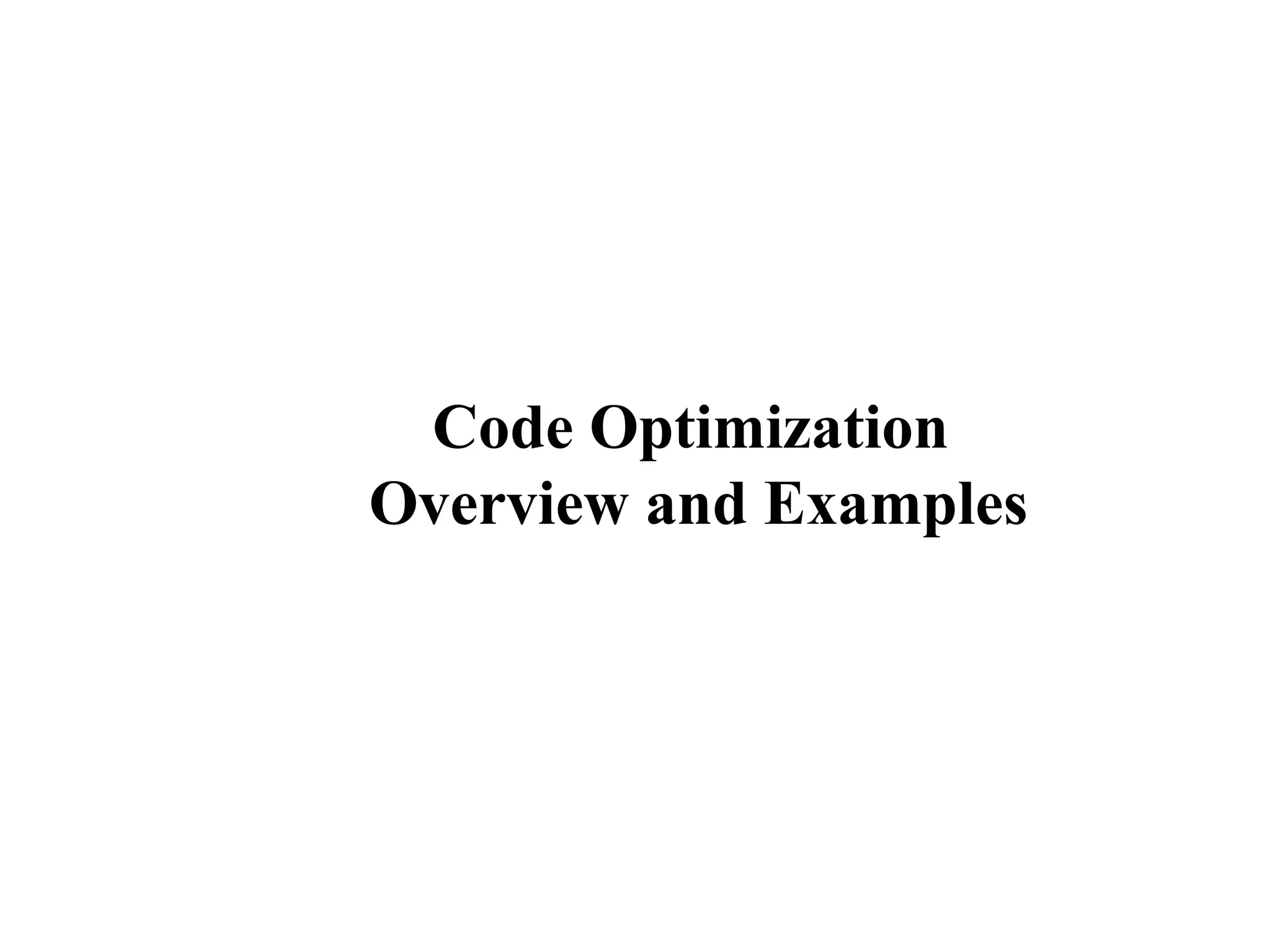
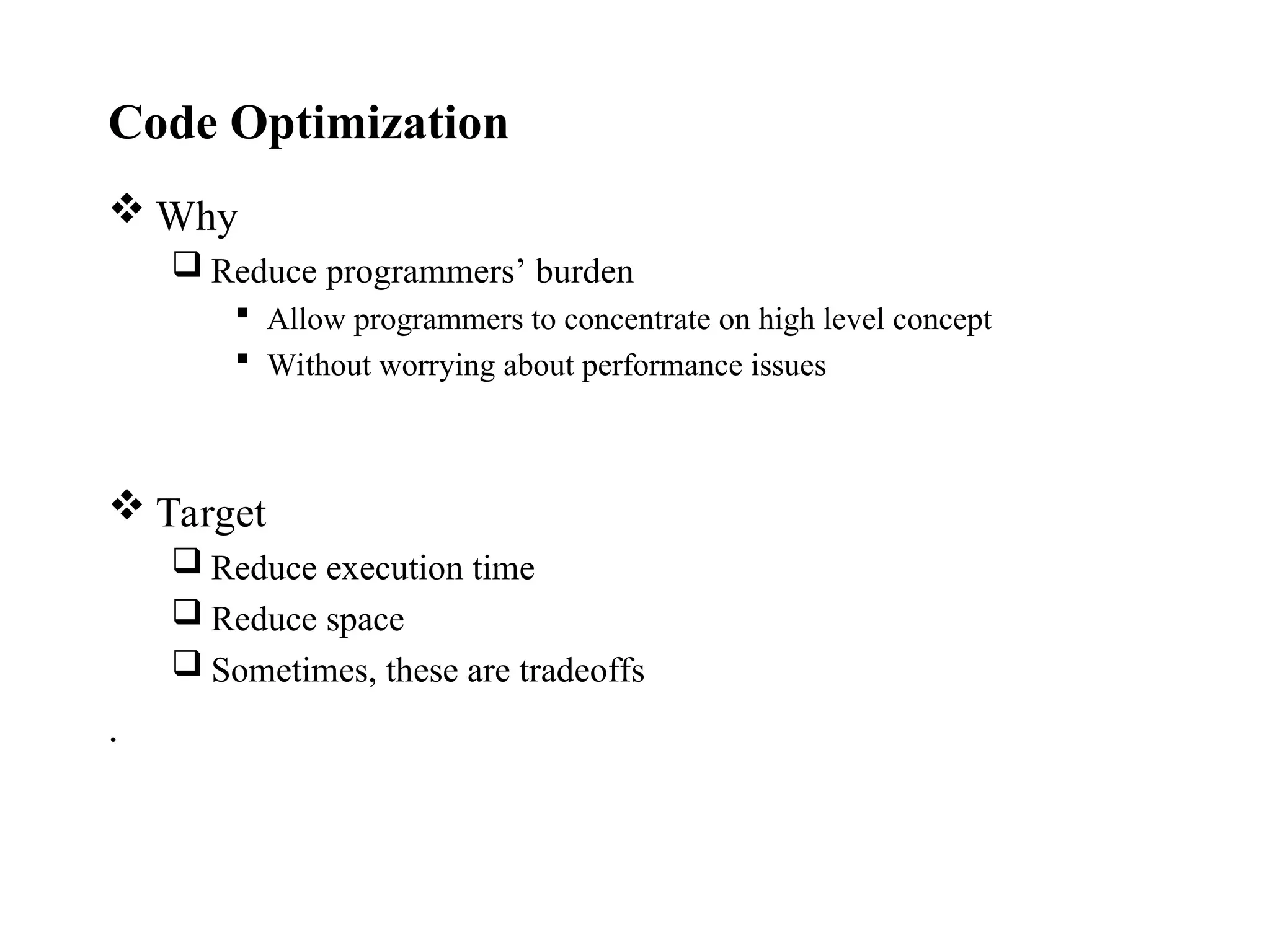
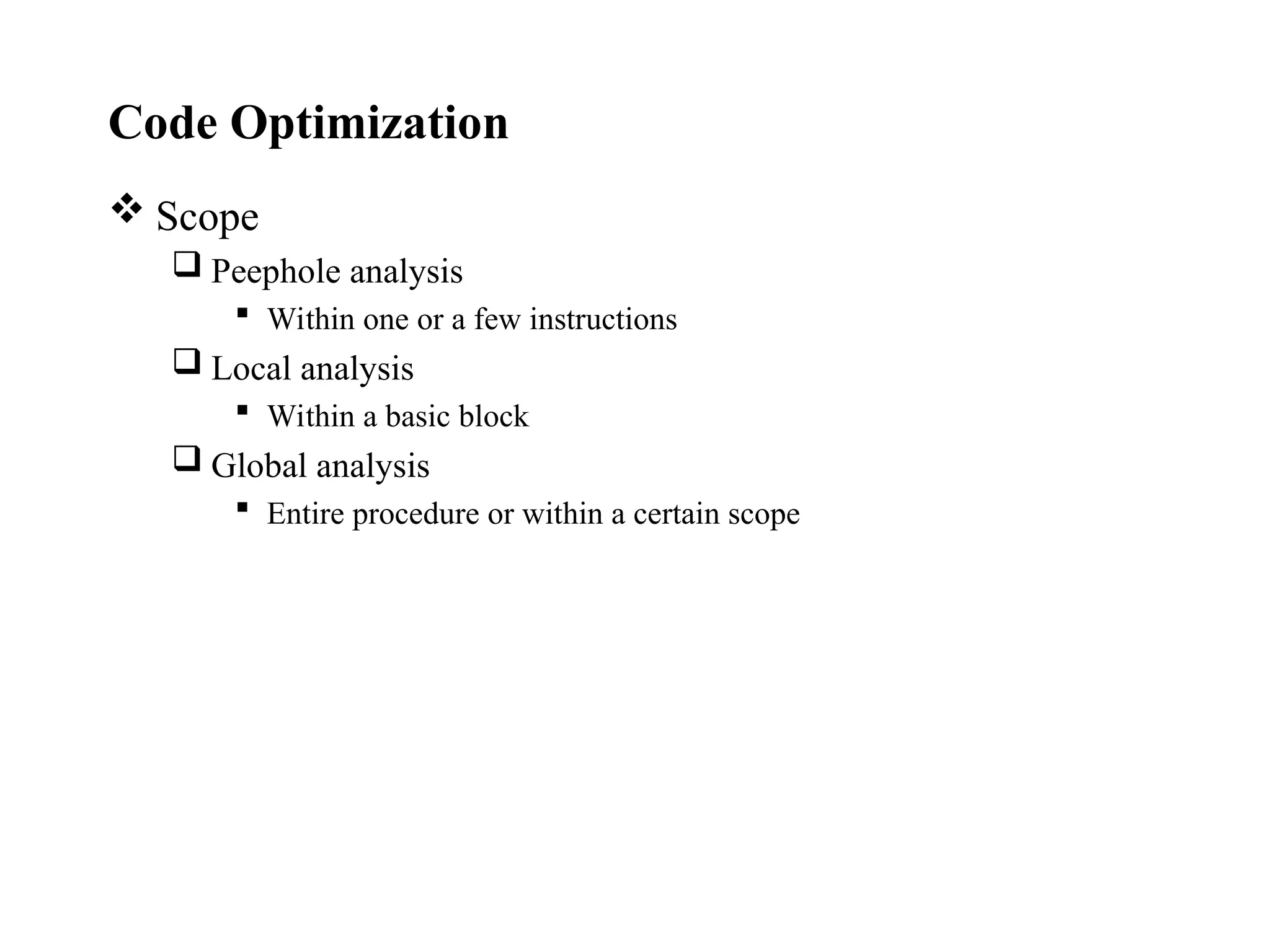
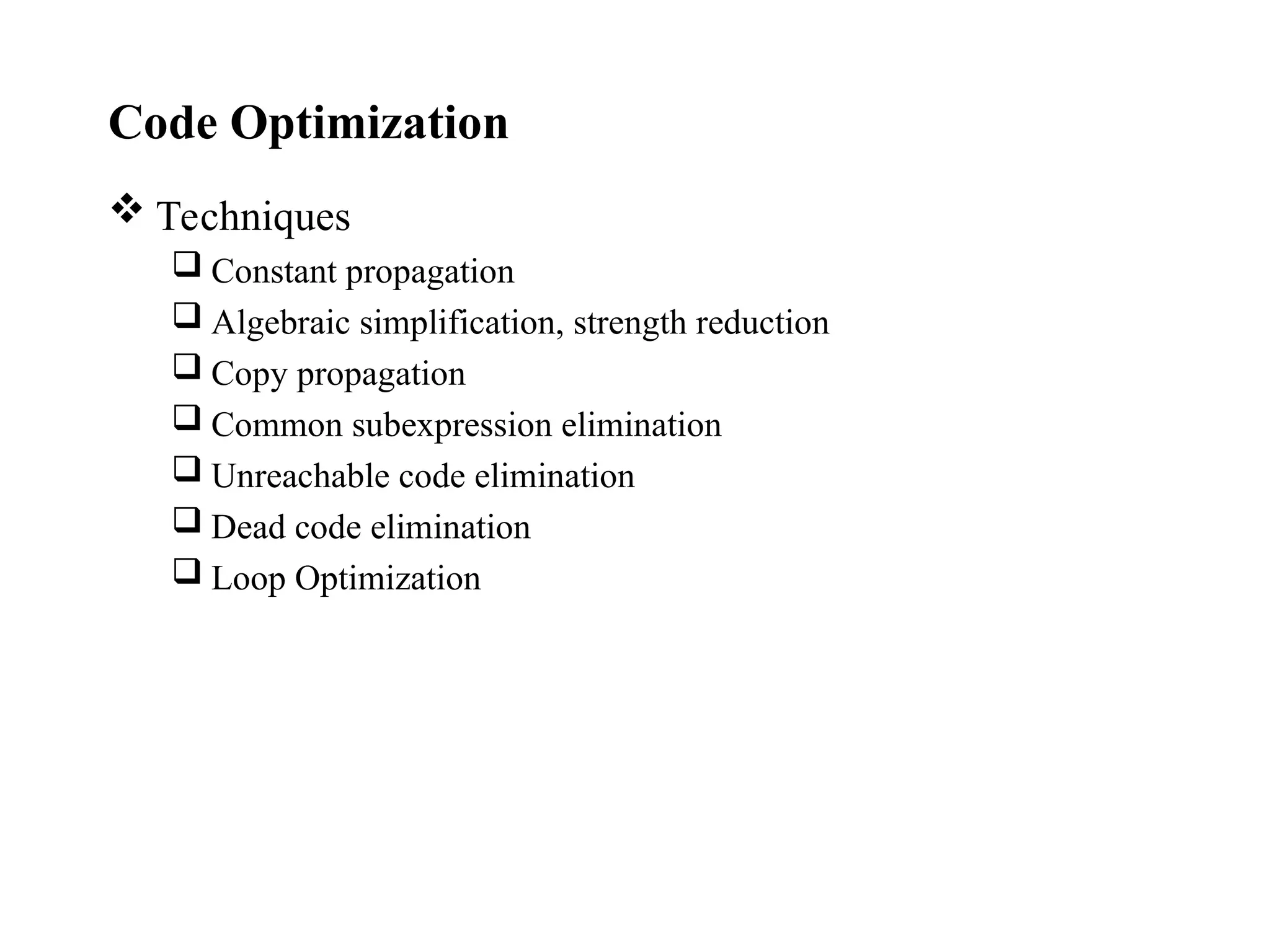
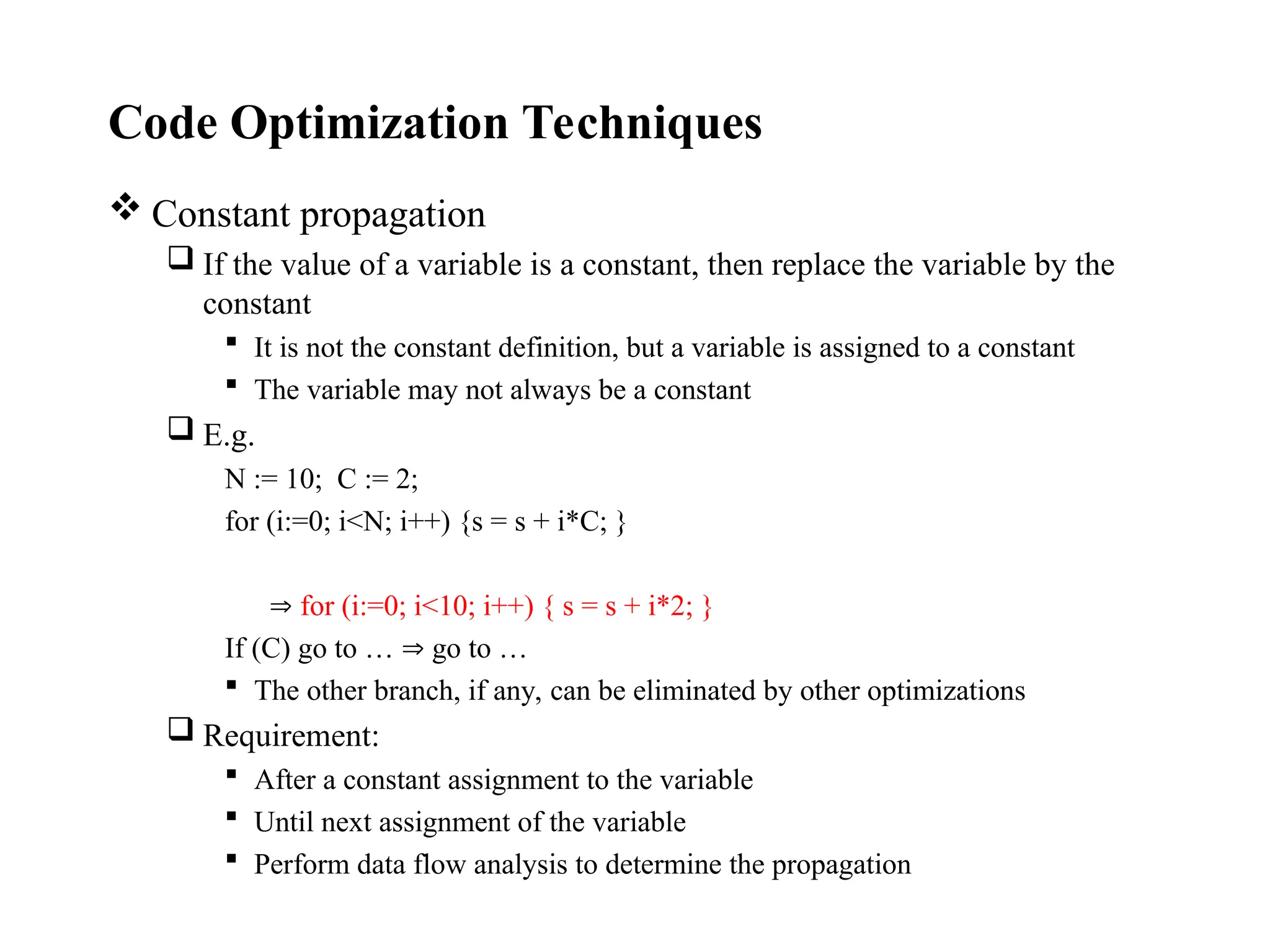
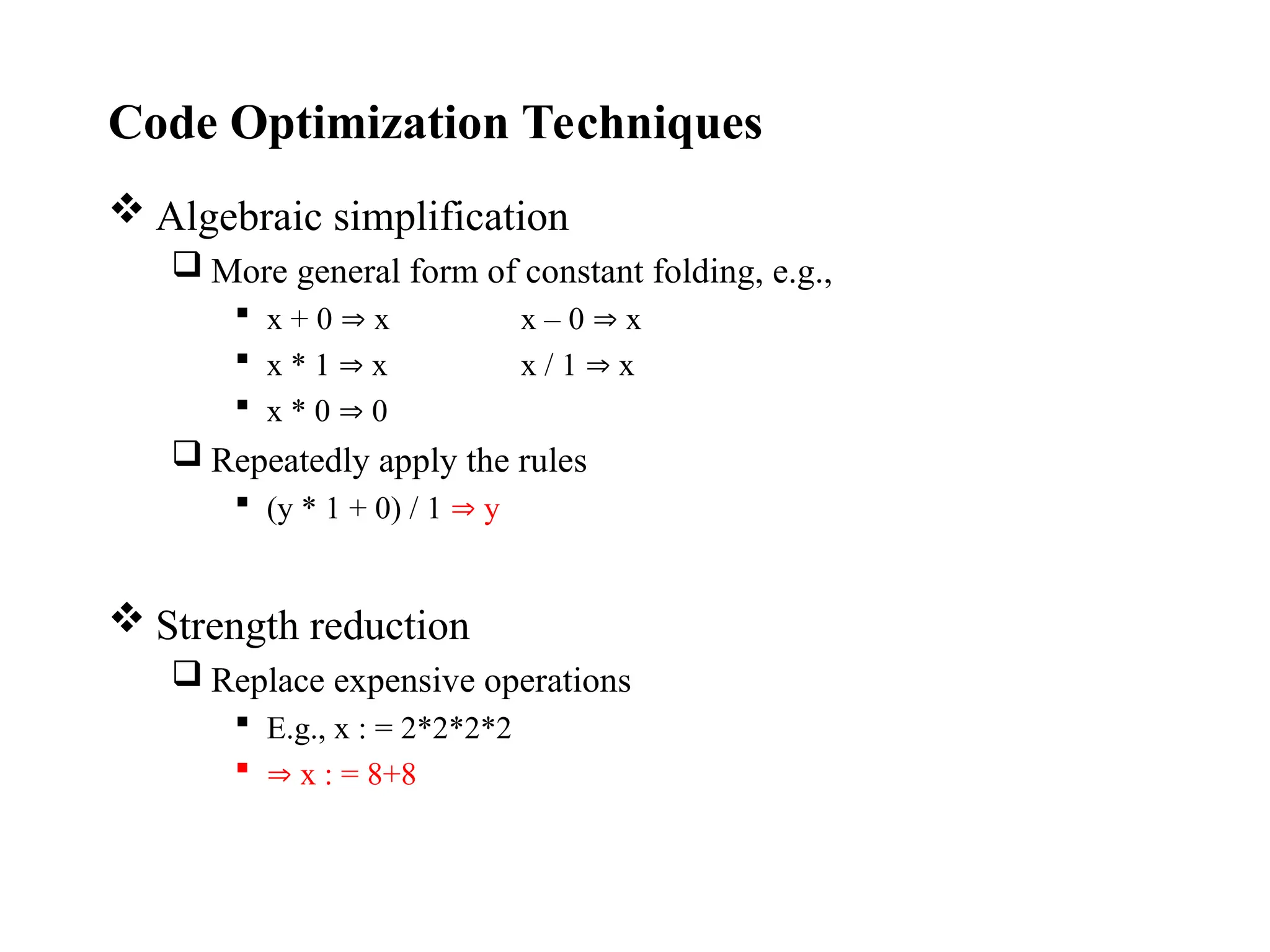
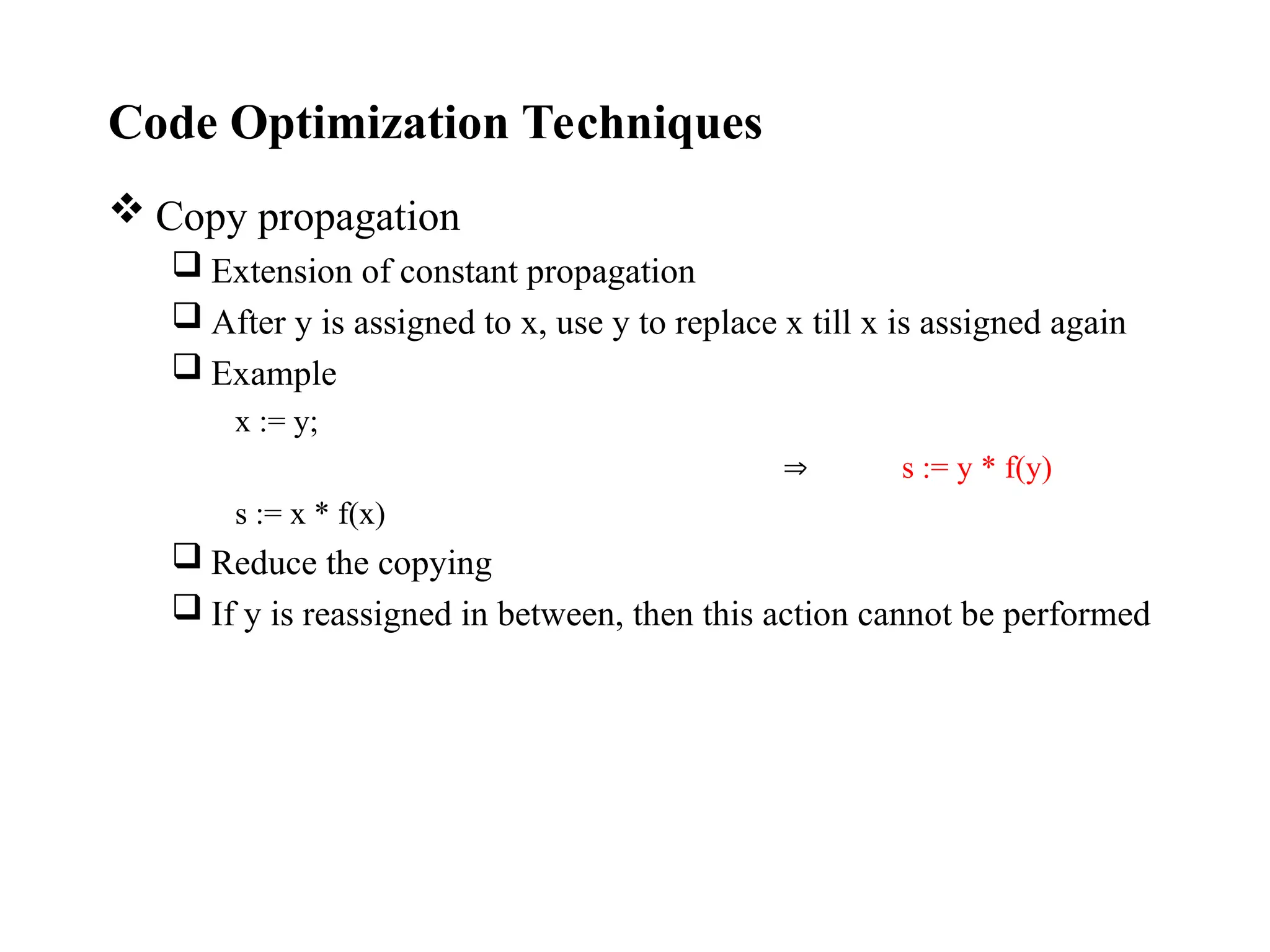
![Code Optimization Techniques
Common subexpression elimination
Example:
a := b + c a := b + c
c := b + c c := a
d := b + c d := a
Example in array index calculations
c[i+1] := a[i+1] + b[i+1]
During address computation, i+1 should be reused
Not visible in high level code, but in intermediate code](https://image.slidesharecdn.com/codeoptimizationlec7-250119104207-c95f81a2/75/Code-Optimization-Lec-7-ppt-Code-Optimizer-8-2048.jpg)
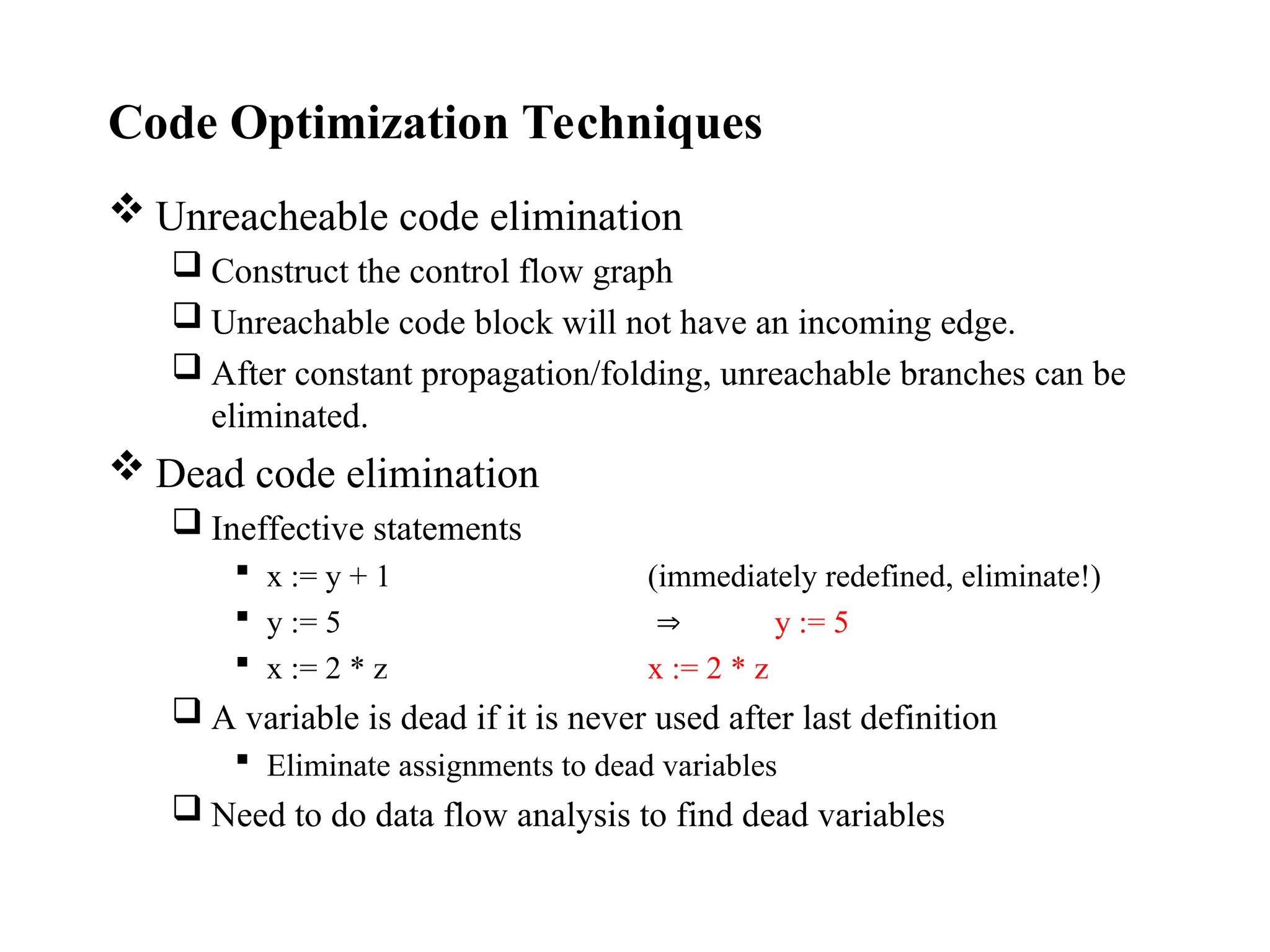
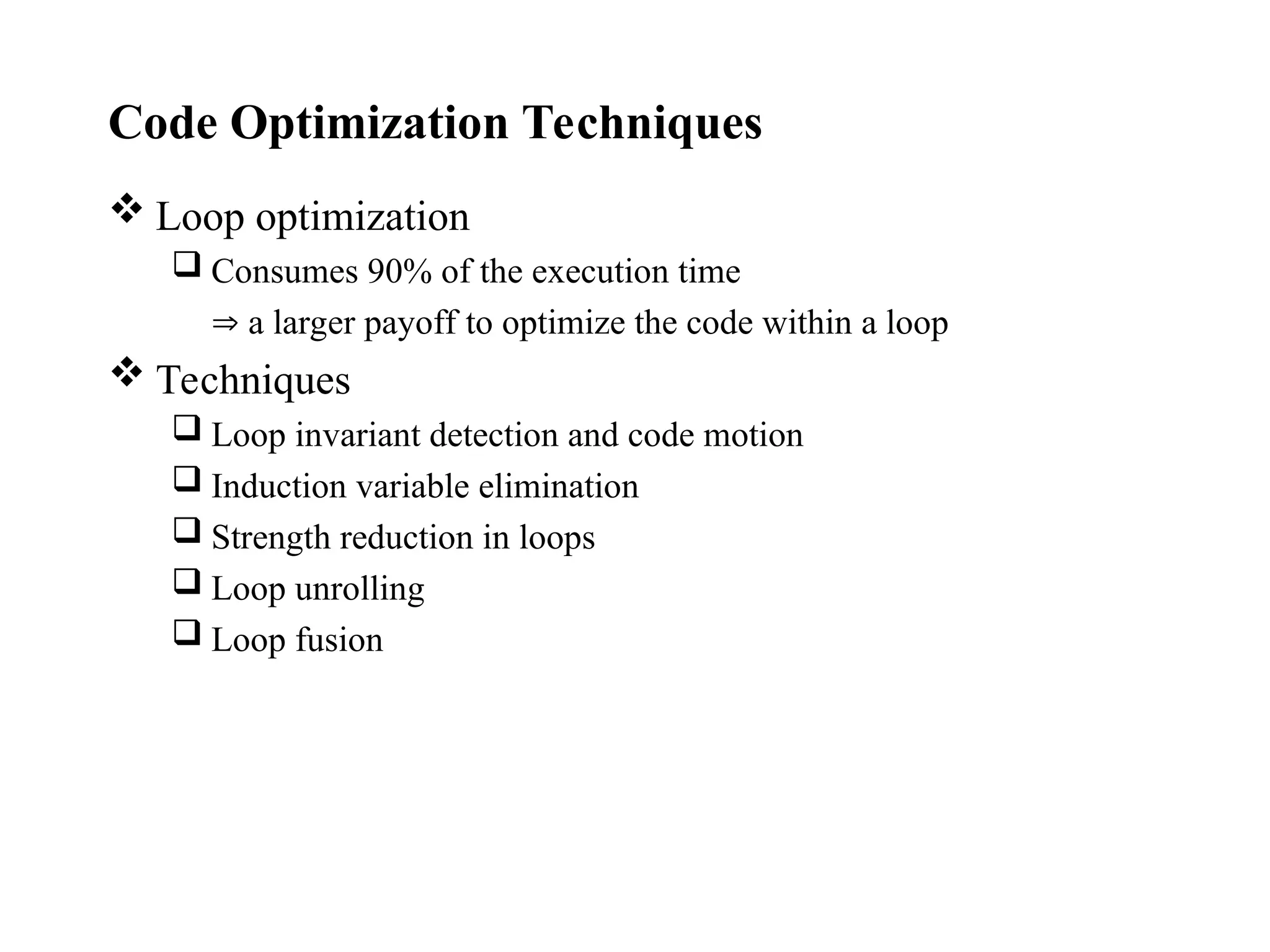
![Code Optimization Techniques
Loop invariant detection and code motion
If the result of a statement or expression does not change within a
loop, and it has no external side-effect
Computation can be moved to outside of the loop
Example
for (i=0; i<n; i++) {a[i] := a[i] + x/y;}
Three address code
c := x/y;
for (i=0; i<n; i++)
{a[i] := a[i] + c;}](https://image.slidesharecdn.com/codeoptimizationlec7-250119104207-c95f81a2/75/Code-Optimization-Lec-7-ppt-Code-Optimizer-11-2048.jpg)
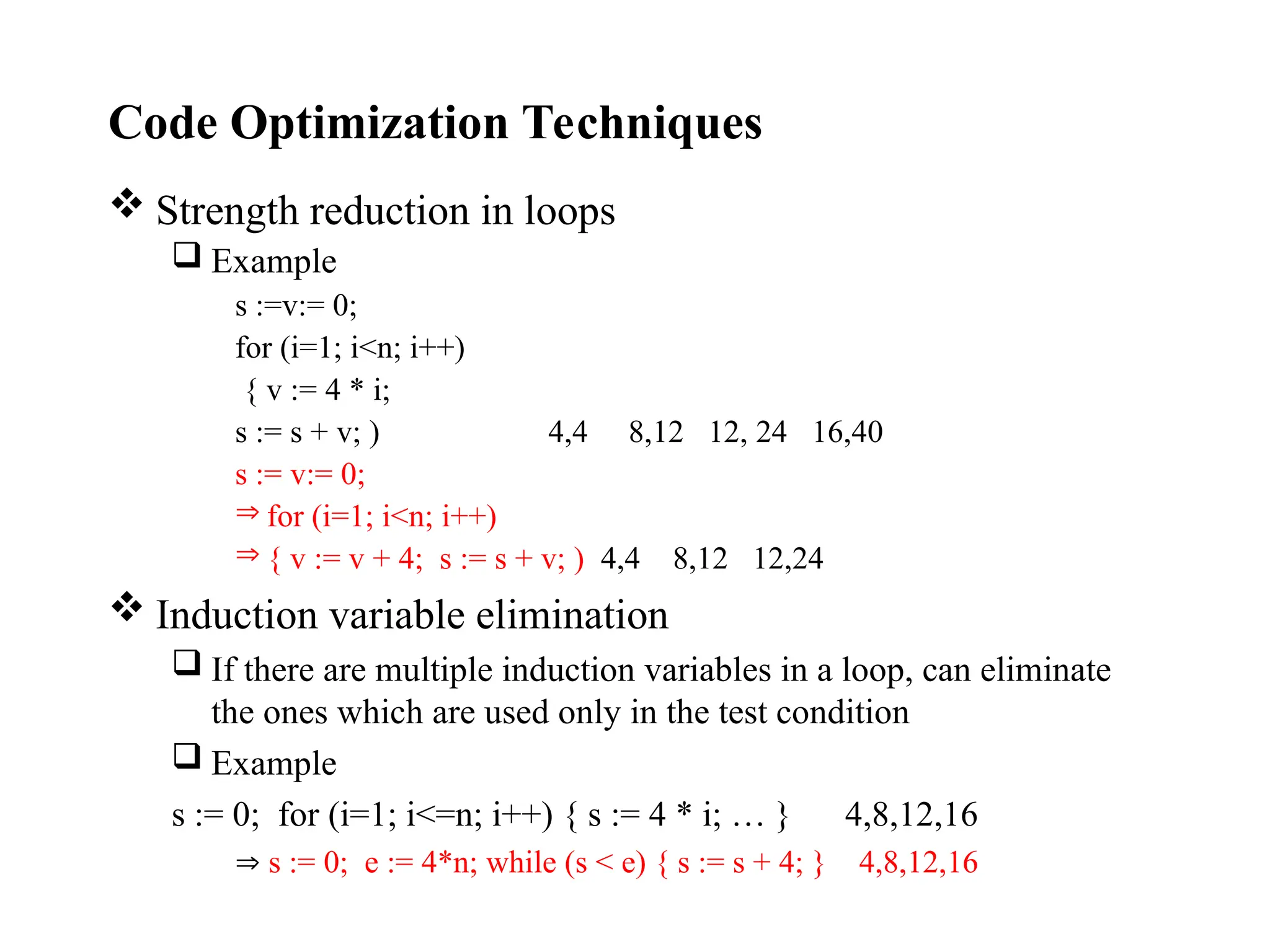
![Code Optimization Techniques
Loop unrolling
Execute loop body multiple times at each iteration
Get rid of the conditional branches, if possible
Allow optimization to cross multiple iterations of the loop
Especially for parallel instruction execution.
For(i=0; i<100; i++) 200 sec
{
Cout <<A[i]
}
For(i=0; i<100; i=i+2) 150sec
{
Cout <<A[i]
Cout <<A[i+1];
}](https://image.slidesharecdn.com/codeoptimizationlec7-250119104207-c95f81a2/75/Code-Optimization-Lec-7-ppt-Code-Optimizer-13-2048.jpg)
![Code Optimization Techniques
Loop fusion
Example
for i=1 to N do 600sec
A[i] = B[i] + 1
endfor
for i=1 to N do
C[i] = A[i] / 2
endfor
for i=1 to N do
D[i] = 1 / C[i+1]
endfor
Before Loop Fusion
for i=1 to N do 100+300=400
A[i] = B[i] + 1
C[i] = A[i] / 2
D[i] = 1 / C[i+1]
endfor
Is this correct?
Actually, cannot fuse
the third loop](https://image.slidesharecdn.com/codeoptimizationlec7-250119104207-c95f81a2/75/Code-Optimization-Lec-7-ppt-Code-Optimizer-14-2048.jpg)